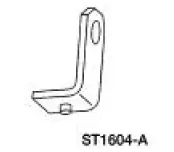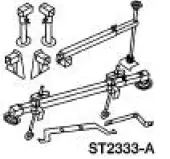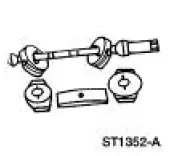Ford Mustang (1999-2004) Service Manual: Oil Pan
Special Tool(s)
|
|
Compressor, Coil Spring 204-D001 (D78P-5310-A) |
 |
Lifting Bracket, Engine 303-D088 (D93P-6001-A2) |
 |
3-Bar Engine Support Kit 303-F072 |
Material
| Item | Specification |
| Metal Surface Cleaner F4AZ-19A536-RA or equivalent | WSE-M5B392-A |
| Silicone Gasket and Sealant F7AZ-19554-EA or equivalent | WSE-M4G323- A4 |
| Super Premium SAE 5W-20 Engine Oil XO-5W20-QSP or equivalent | WSS-M2C153-H |
 Oil Level Indicator and Tube
Oil Level Indicator and Tube
Removal
1. Remove the oil level indicator.
2. Remove the LH exhaust manifold. For additional information, refer to Exhaust
Manifold LH in
this section.
3. Remove the bolt.
4. Remove the oil level ...
 Removal
Removal
1. Disconnect the battery ground cable. For additional information, refer to
Section.
2. Remove the transmission.
3. Remove the air intake scoop. For additional information, refer to Section.
4. R ...
Other materials:
Keyless Entry (Diagnosis and Testing)
Refer to Wiring Diagrams Cell 59 , Generic Electronic Module for
schematic and connector
information.
Refer to Wiring Diagrams Cell 111 , Remote Keyless Entry (RKE) for
schematic and connector
information.
Special Tool(s)
73 Digital M ...
Installation
1. CAUTION: Lubricate the filler pipe check valve area and the
tank-to-filler pipe
grommet with Serfactant prior to assembly or damage to the filler pipe check
valve will
occur.
NOTE: A new grommet must be used for the installation procedure due to
its dest ...
System Bleeding
1. If required, remove the hydraulic system from the vehicle. Refer
to Hydraulic System, Lift
Cylinder and Motor in this section.
2. Remove the fill plug at the end of the hydraulic pump.
3. Fill the pump with Mercon Multi-Purpose Automatic Transmiss ...

